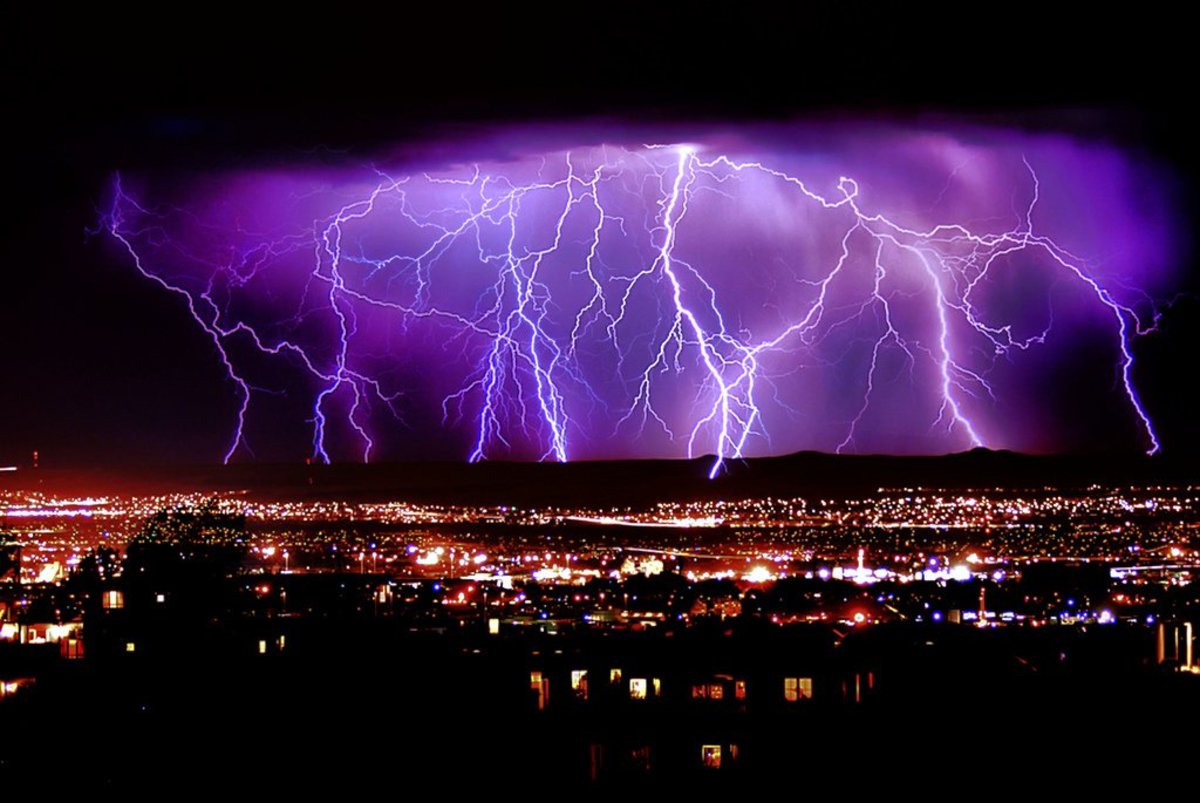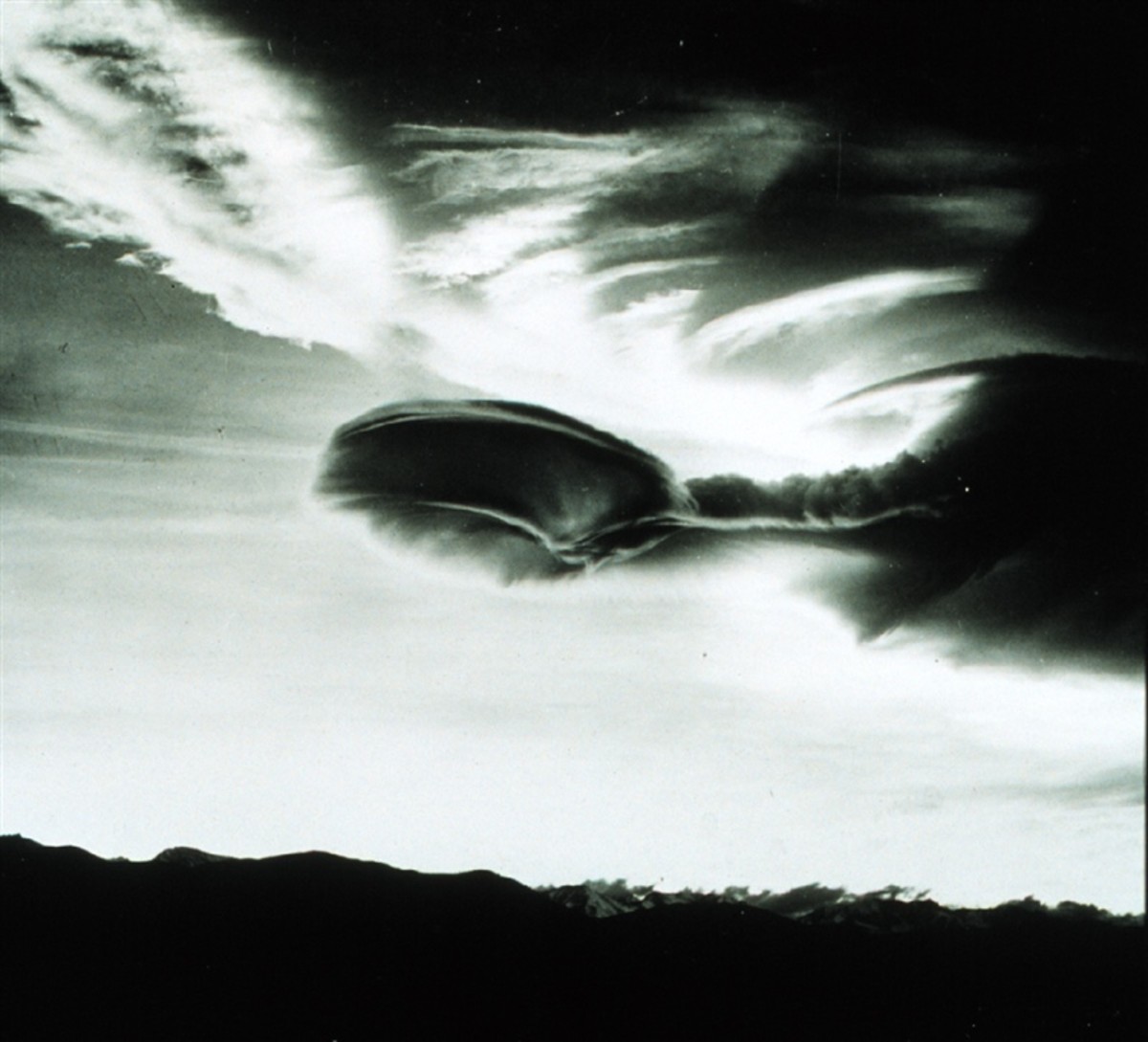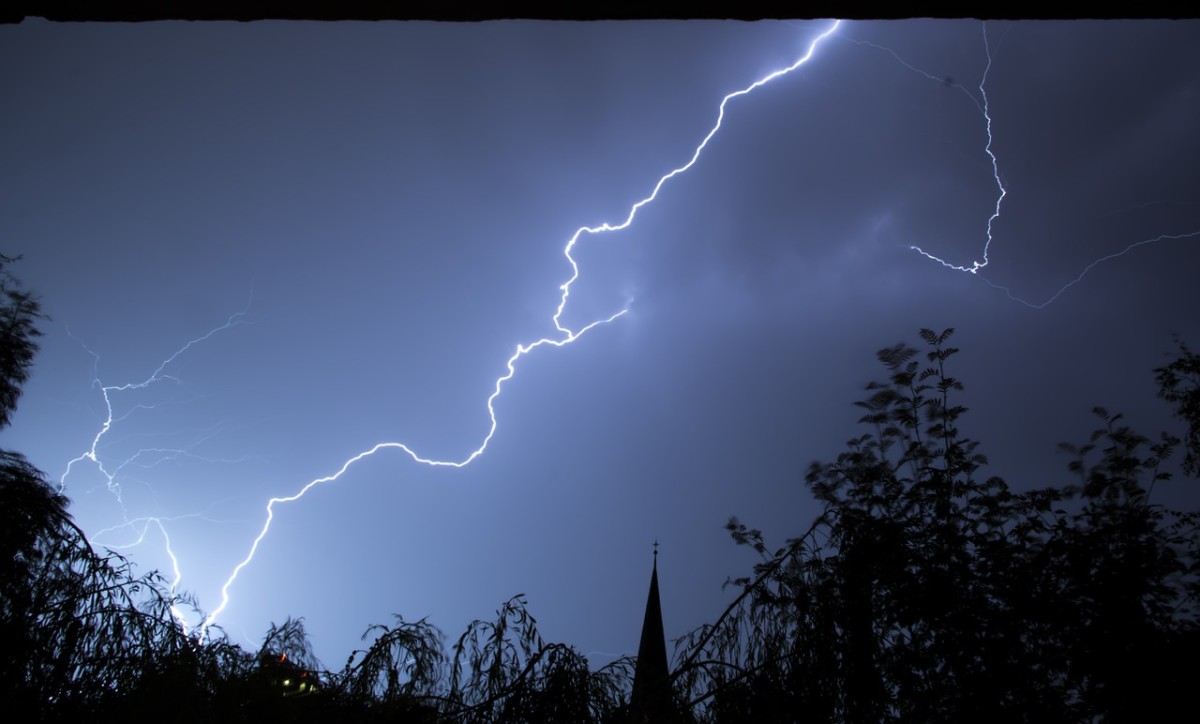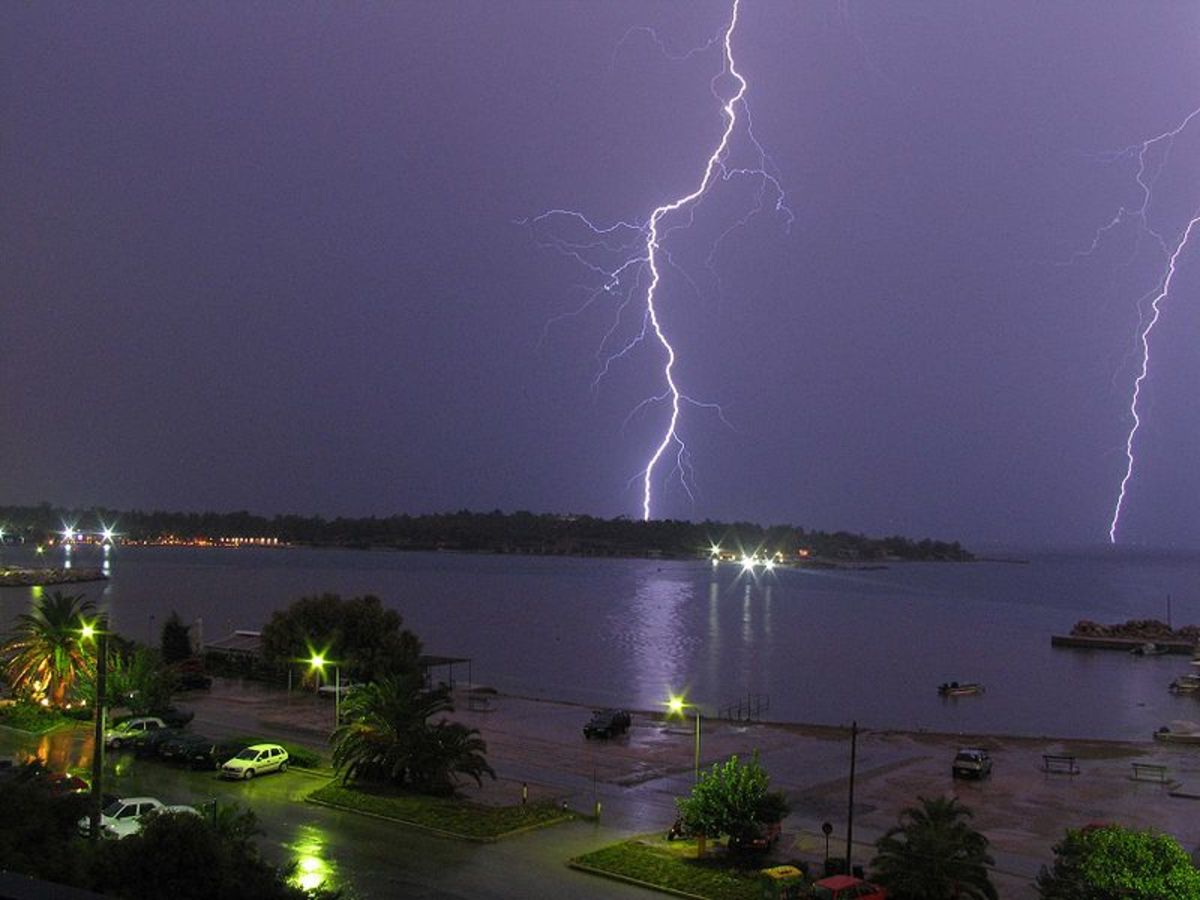Cloud-to-Cloud and Cloud-to-Ground Lightning
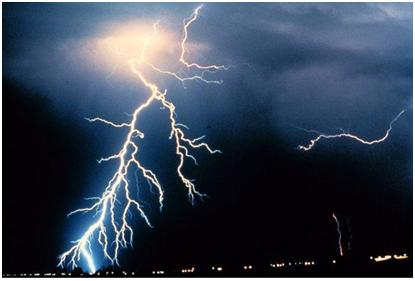
By Joan Whetzel
All lightning, whether it's cloud-to-cloud or cloud-to-ground lightning, forms in the same way. It's similar to the static charge you get from rubbing your feet along the carpet then touching someone else, only on a much grander scale. The main difference between cloud-to-cloud and cloud-to-ground lightning is that cloud-to-cloud lightning only dances around up in the clouds whereas cloud-to-ground lightning produces a light show that branches off and reaches down to the Earth's surface, which makes it more of a danger to us.
Lightning
Lightning is generated as an electrostatic charge inside of cumulonimbus clouds (those big, heavy thunderheads) due to the friction created when hail, ice crystals, and water drops bump into each other. The water drops and ice crystals are carried upward by updrafts of wind while the hail is trying to drop toward the Earth. The water drops, hail, and ice crystals are tightly packed together at this point, and moving in opposite directions, so that the air can no longer act as an insulator, preventing them from sparking.
Once sparked, the lighting starts moving along a heat channel. The heat generated by the average lightning bolt reaches approximately 54,000 degrees Fahrenheit (30,000 degrees Celsius) and produces an electrical charge that can exceed 100,000 volts. (That's enough voltage to power to light up an average 12 volt / 100 watt light bulb for about 8,333 hours.) In about 1% of all lighting storms, this electrostatic discharge (lightning) is accompanied by that all too familiar sound effect known as thunder as it travels along its heat channel.
Cloud-to-Cloud Lightning Vs. Intra-Cloud Lightning
Usually, lightning that lights up the clouds is contained within a single cloud (intra-cloud lightning), however, it is not uncommon for the lightning discharges to travel between two or more clouds (cloud-to-cloud lightning). In the case of intra-cloud lightning, the negatively charged ions and the positive ions are contained within the same cloud. The form of lightning referred to as the cloud-to-cloud variety, occurs when the electrical charge travels between the negative ions, which have congregated at the base of one cloud, and the positive ions, which have migrated to the upper levels of a neighboring cloud. In either case, the resulting flashes of electricity light up the clouds from the inside. Viewing this type of lightning is like looking at a lampshade with a flickering light bulb behind it.
Cloud-to-cloud lightning at higher altitudes than the cloud-to-ground variety. This makes the lightning display more visible, sometimes up to 320 km or 200 miles away, especially if the regional terrain is fairly flat.
Cloud-to-Ground Lightning
The electrostatic charge causes the positive and negative ions in the cloud to separate. In cloud-to-ground lightning, the negative ions reach downward toward the ground, leaving the positive ions up in the clouds. The positive ions have been building up inside the Earth at the same time. When the charge difference is great enough, the flow of electricity between the Earth and the clouds known as cloud-to-ground electricity occurs, meaning the Earth gives up its positive ions in exchange for the negative ions that the clouds have been storing.
Cloud-to-ground lightning generally moves along a stepped pathway, meaning it stars in the clouds, then moves part way along a heat channel toward the Earth. The heat channel branches out into small heat channels that look something like an upside-down tree limb. Each branch waits briefly before either branching off further or searching for a discharge reaching upward from the Earth, usually at around 300 feet above ground level. Only one of the branches makes contact with an Earth-generated lightning channel. Once the cloud's lightning channel meets the Earth's lightning channel, their newly united channel exchanges positive and negative ions. The negative ions go down to the Earth and positive ions travel up to the clouds.
Resources
Windows to the Universe: Thunder and Lightning
http://www.windows2universe.org/earth/Atmosphere/tstorm/tstorm_lightning.html
The Weather Dude: Thunder and Lightning
http://www.wxdude.com/page5.html
Weather Eye: Thunder Lightning.
http://weathereye.kgan.com/cadet/lightning/thunder.html
NOAA National Severe Storms Lab: Lightning Basics. http://www.nssl.noaa.gov/primer/lightning/ltg_basics.html
Associated Content: Time Between a Lightning Flash and Thunder. Leanna Teague. http://www.associatedcontent.com/article/349374/time_between_a_lightning_flash_and.html?cat=42
NOVA. How Lightning Works.
http://www.pbs.org/wgbh/nova/earth/how-lightning-works.html
The Airline Pilots. Cloud-to-Cloud Lightning.
http://www.theairlinepilots.com/met/cloudtocloudlightning.htm
Robinson, Dan. Storm Highway. Lightning Types and Classifications.


